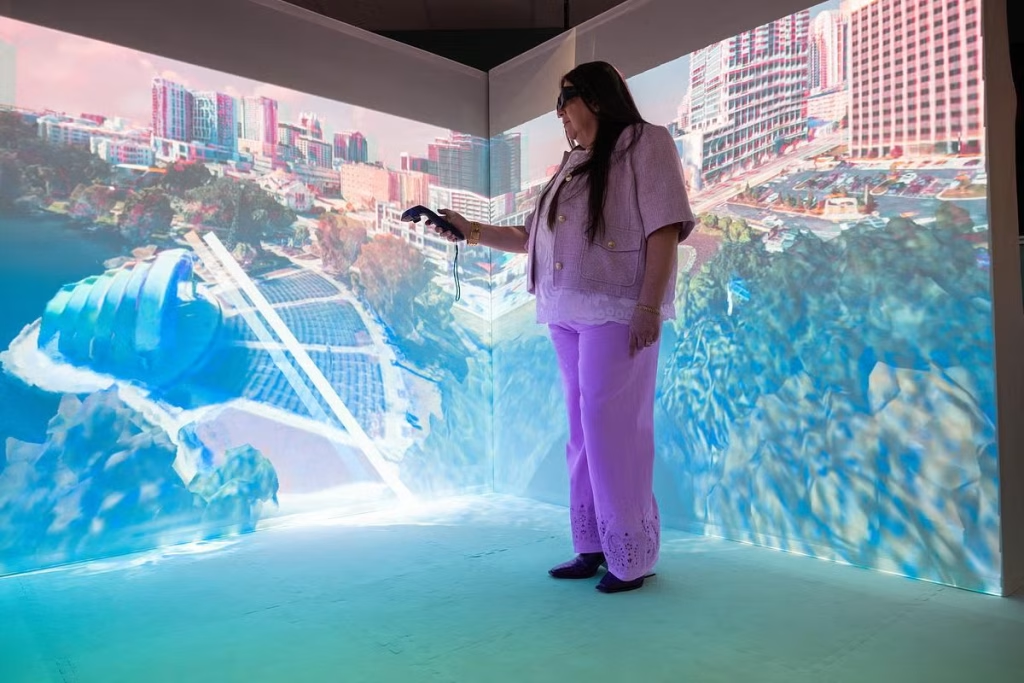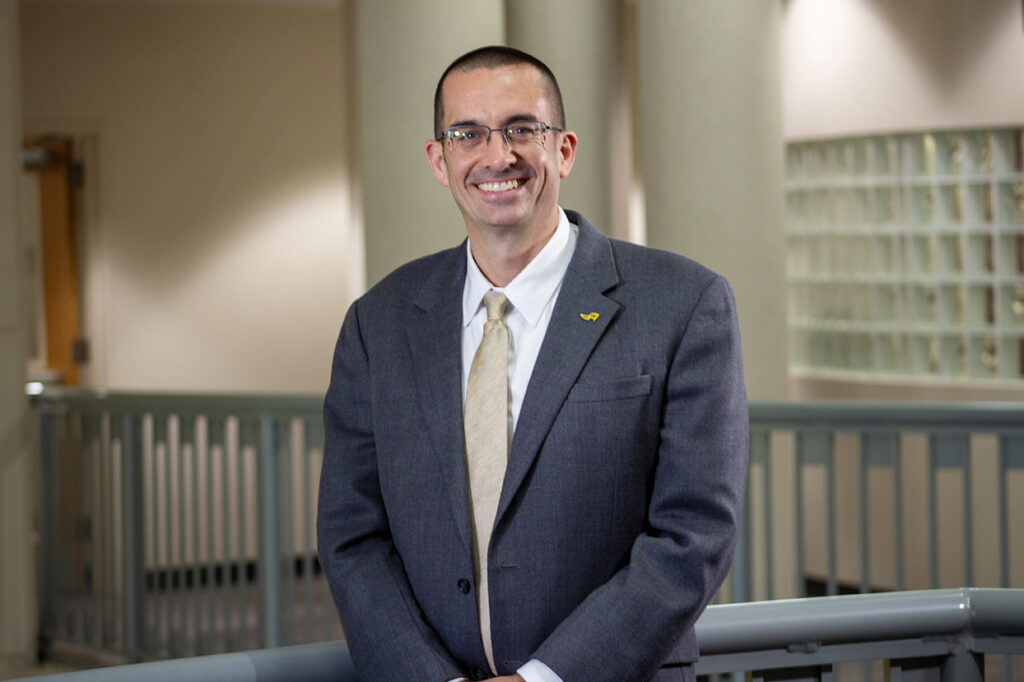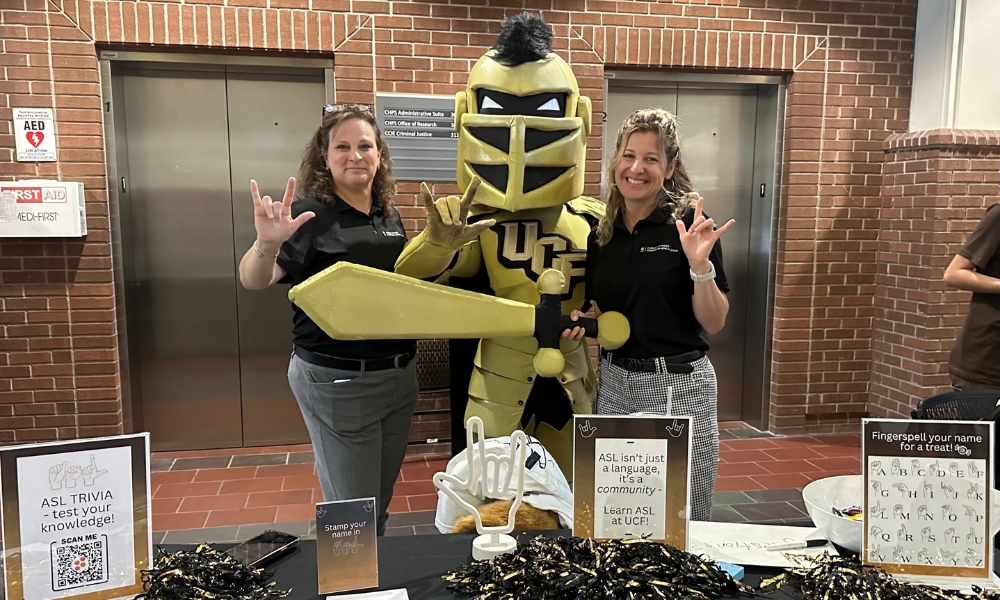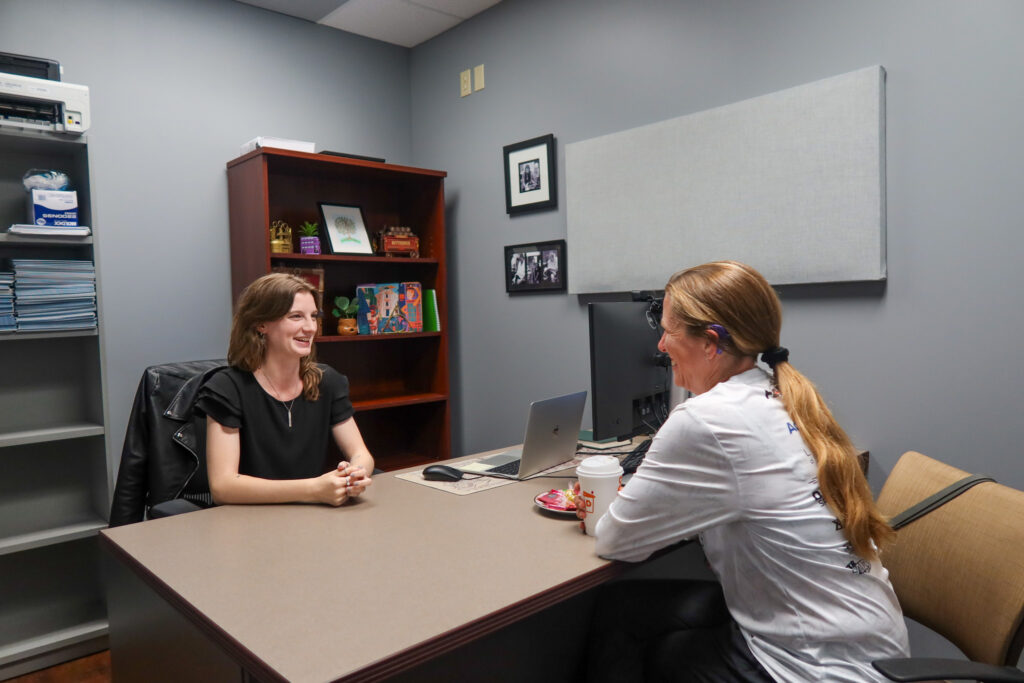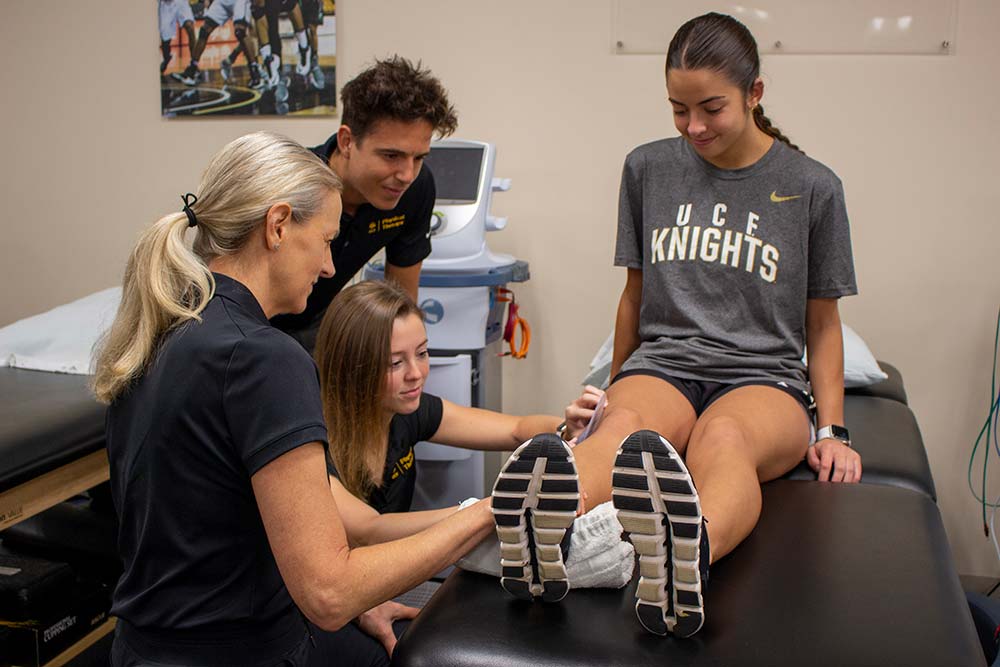A little more than a year ago, faculty and students in the College of Health Professions and Sciences who were working on research projects had to pivot when COVID-19 derailed their plans.
CHPS researchers regrouped and forged ahead with their projects by finding new ways to use the data they had already collected or making modifications to their research protocols to safely continue their human subject research.
Keeping in mind that many students rely on these research projects as part of their graduation requirements and to fund their education, CHPS’s faculty members were determined to support their students’ timely graduation and to help them continue their important work. This required some creative thinking, new approaches, and even a few headaches, but in the end everyone was successful.
Not only did students learn the importance of adjusting their projects to meet unexpected circumstances, but faculty researchers also discovered new avenues of possibilities for their research.
Below are examples from each unit in our college showing how researchers pivoted during COVID-19.

Social Work Faculty Pivot Outreach to Online and See Increased Reach During a Time of Heightened Need
“It’s been quite a year,” says Tracy Wharton, associate professor in the School of Social Work.
When stay-at-home orders were issued, Wharton was in the middle of a multiyear project for Florida REACH – Resources for Enhancing Alzheimer’s Caregiver Health, a program sponsored by the Florida Department of Health that provides training for the caregivers of family members with dementia or Alzheimer’s disease.
In addition to providing training for caregivers, this research offers an often-ignored look into mental health issues often faced when managing the care of a loved one with a memory disorder, such as dementia.
Improving access to geriatric mental health services has always been a passion of Wharton’s, who was awarded a postdoctoral fellowship from the National Institutes of Health and the National Institutes of Mental Health to further study this unique population.
Through a collaboration with AdventHealth Memory Disorder Clinic, Wharton is hoping to work with the 16 memory centers across the state to set up the FL-REACH program.
The work Wharton and a clinical intern were doing on behalf of the caregivers was deemed an essential service by the AdventHealth hospital system because caregivers have faced extraordinary pressures during the pandemic, and often express thoughts of suicide associated with the rigors of caring for their loved ones. Continuing this work amid the pandemic was paramount.
FL-REACH was designed to be shared face-to-face in a clinic, Wharton says. But once everything shut down, Wharton and her team decided they had to continue to get the needed information and interventions to the caregivers in a safe way.
They were determined to find a way to make it work. So FL-REACH became TeleREACH, Wharton says. The modality proved successful, and even garnered more participants thanks to the ease of connecting online.
“Some people said they wouldn’t be able to participate back when we planned to do in-person sessions,” Wharton says. “When someone is living with dementia, it takes a lot more logistics to get everyone ready, into the car and then drive to the appointment. With TeleREACH, it was easier for the patients and their caregivers to remain in their homes and receive the therapeutic interventions via telehealth. The person with dementia could participate and leave if they got worn out.”
And, Wharton says they were able to include family members from across the country who would not have been able to participate otherwise. This could not have happened in the original model.
The data Wharton gathered prior to the pandemic was remarkably similar to the information she received from the groups who had attended the virtual trainings, save for a few notable differences.
“We got a more diverse group, both ethnically and linguistically, and participants were more likely to have less education and lower income than in-person participants,” Wharton says. “When people started the training, they realized how much they didn’t know about being a caregiver for someone with dementia. By the end, their ‘preparedness for caregiving’ and burden measures were significantly improved, and their overall outcomes were the same as the in-person groups.”

Athletic Training Students Pivot Research to Work with U.S. Figure Skating
In the Master of Athletic Training program, students had begun collecting data for their capstone project in collaboration with the UCF women’s lacrosse club.
“It was the week before spring break and we were all excited,” says Colby Mangum, the director of the athletic training research lab. “We had just started data collection with the women’s club lacrosse team, and then spring break happened and we never came back.”
The plan was for the research team to follow the athletes throughout their season – gathering baseline data, collecting any injury occurrence information, and then gathering post-season data.
“We had a lot of hopes and dreams,” Mangum says, “We collected data one time before everything was shut down. We collected ultrasound images and electromyography while the athletes did mini-warmups. And then it was gone, but we pivoted.”
Mangum reassured the students that she and the other faculty members would come up with a plan for them to finish their degrees. Sometimes, though, even the faculty members themselves needed some convincing.
“Every pep talk went both ways, that’s for sure,” Mangum says.
To get her students access to the athlete population they needed, Mangum looked to collaborate with a colleague who wanted to work collaboratively to analyze pre-collected data in a sport population— figure skating.
In addition to having access to figure skaters, Mangum says the figure skaters had similarities to the lacrosse players in the muscles the athletes used since core stability is important for both sports.
By working with data from U.S. Figure Skating, students were able to measure core endurance, lower extremity function, balance, and neuromuscular control difference between landing and take-off legs.
“While there was some disappointment about not going with the original research plan, students were excited about getting to work with U.S. Figure Skating,” Mangum says. The students successfully presented their capstone project findings in April and hope to publish later this year.

Health Sciences Faculty Pivot to Online Health Intervention for Adults with Autism and See Great Outcomes
“I did not expect that we would have to change so much,” says Jeanette Garcia, an assistant professor in health sciences. Garcia has been researching the health behaviors of children with autism for several years.
After finishing a project last year on a school-based nutrition and exercise program for children with autism, Garcia began a similar project with young adult clients from UCF Center for Autism and Related Disabilities (CARD).
CARD personnel identified that its adult clients needed assistance increasing physical activity and guidance on healthy eating on a budget. This is where Garcia and her collaborators came in. Garcia, along with Muriel Lee, a registered dietitian nutritionist in health sciences, provided a nutritional education curriculum tailored to this population.
Part of the program included cooking demonstrations online. One of Garcia’s student researchers served as the on-camera host who demonstrated how to prepare healthy meals. Participants were invited to post pictures of their finished meals to show off their achievements.
The goal of increasing the participants’ physical activity was a little trickier, Garcia says.
To facilitate physical activity at home, Garcia and student researchers provided ideas, resources and goals to participants. By the end of the program, Garcia said participants were feeling more comfortable exercising at home.
“We’re reviewing the data now,” Garcia says. “It was a lot, but we managed to make the best of it. We think that family involvement is the key to success in these types of interventions; Zoom was actually very helpful in facilitating these interventions.”
Garcia has a plan for “next time,” should the need arise and for incorporating ideas from what was learned during the pandemic.
“For the participants who can’t get to a program because of distance or anxiety issues, Zoom could be an option for them. We would reach a lot more people for sure.”
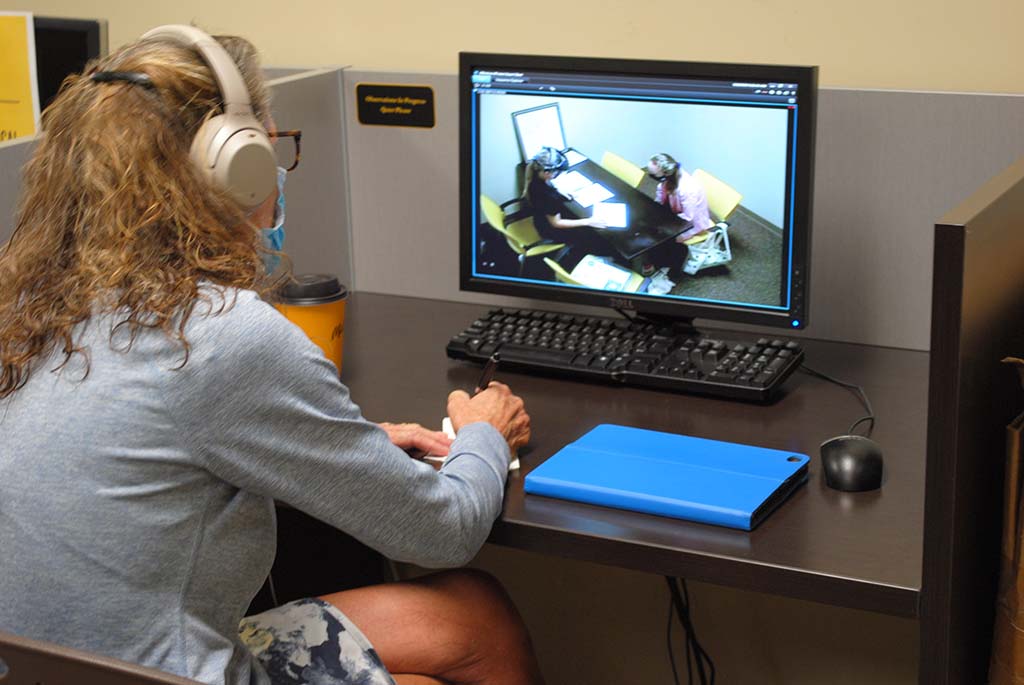
Communication Sciences and Disorders Faculty Pivot Research to Examine Impact of COVID-19 on School Children with IEPs; Connects Families with Assistive Technology to Help Communicate
A year ago, Nancy McIntyre was a research fellow at UNC Chapel Hill. She had just accepted her position as an assistant professor at UCF in the School of Communication Sciences and Disorders. She was working on a school-based study of a peer-mediated reading and language comprehension intervention between children with autism and their typically developing peers.
As McIntyre wrapped up that project and transitioned to UCF during the pandemic, she realized that the language and literacy needs of elementary-aged children with autism might not be addressed during this tumultuous time. She saw this vulnerability as an opportunity to explore whether students with autism had learning deficits from this past year and if so, how best to address those needs.
She and her colleagues surveyed parents of children with autism to learn about their school-based language and literacy services before COVID-19, and what services they have been receiving during COVID-19.
McIntyre suspects – and early data have shown – that many parents feel their children are finding it difficult to learn during the educational shifts brought about by the pandemic and are falling further behind their non-autistic peers.
“Our parents were in tune with their children’s needs,” McIntyre says, “They knew their children were not getting what they needed in terms of their reading and language development.”
McIntyre hopes to secure a grant to address the needs of these children to help them “catch up” if there are deficits.
Other researchers in the School of Communication Sciences and Disorders, also experienced shifts in their projects and the way they continued their research into assistive technology to aid communication.
For the past four years, UCF faculty and student researchers have partnered with researchers at the University of New Mexico on a $2.7 million grant to study how language therapy combined with technology can help children with complex communication needs to communicate using increasingly complex language. During the pandemic, when almost all non-life-threatening medical care was being done via telehealth, the need for assistive devices to help those with communication disorders was heightened.
To streamline the communication and workflow between the researchers at UNM and UCF, Nancy Harrington, the program’s project manager, worked with both university’s research teams so that both teams could access data and collaborate in real time.
“We developed training protocols for our graduate research assistants to help them continue with data analysis at a distance,” Harrington says. “We also worked to leverage what we could learn from the data that we had collected pre-pandemic by developing an entirely new dimension to our analysis.”
As the regional coordinator for one of six FAAST centers in Florida, Carolyn Buchanan coordinates assistive technology services for clients that increase, maintain, or improve functional capabilities of a child with a disability.
In one case, Buchanan arranged teleconference equipment for a non-verbal individual in a hospice setting.
“We were able to deliver a tablet-based system that she needed in order to communicate with caregivers and loved ones,” Buchanan says.
The limitations that were driven by the pandemic amplified the need for the services provided by the FAAST Center, Buchanan says. And while in-person participation in FAAST’s NIH-funded investigations has been on hold due to COVID-19, screenings for future participation in the research studies are currently being conducted remotely.
“Our deliverables didn’t change, nor did the need for services,” Buchanan says. “We saw a dramatic increase in telecommunication services and were able to help more of our clients through new video demonstrations of our technology. By showing them how to effectively use their assistive devices, we helped them improve their quality of life through better communication with their loved ones and medical professionals.”
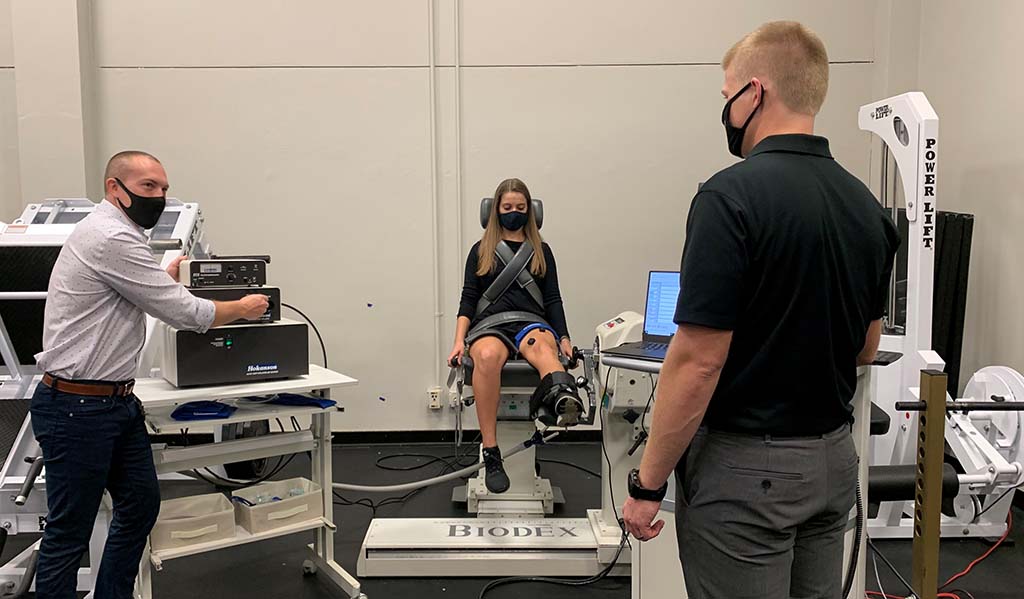
Kinesiology/Physical Therapy Pivots to International Collaboration to Share Data; Examines COVID-19 Impacts of PT Education
For Matt Stock, associate professor in the School of Kinesiology and Physical Therapy, the pandemic put a hard stop on the human subject research that his students had begun.
“My focus was on making sure all the students’ goals and deadlines were met, while ensuring that they had a positive research experience,” Stock says.
Students in the Doctor of Physical Therapy program have a very structured timeline. At the end of their first year of the three-year program, student groups devise their research topics that they will spend much of the second year in the program exploring.
“We hold our students to a high standard,” Stock says, “And it was important to maintain that high standard despite the challenges that the pandemic brought.”
One of those challenges faced by the student researchers was that they were no longer able to collect face-to-face data from their research participants due to the COVID restrictions.
There is a lot of work that students do before they even get to see their first research participant. In addition to formulating research questions, creating a research design and writing a proposal, faculty and university-level approvals are needed, as well as approvals from any outside organizations that may be involved.
“In one of the groups I was working with,” Stock says, “We were going to be collaborating with the VA hospital to study muscle activity in amputees. We had just started recruiting lower-limb amputees.”
Most of the patients had co-morbidities, so in the interest of patient safety, the project could not continue, and the researchers had to pivot to a new research topic.
“I had to tell some of the groups: I know we’ve been planning this for a year, but you’re going to have to come up with a new topic,” Stock says. “Those were not easy conversations to have. Some of the groups had to start from scratch, but I am very proud of how they handled a difficult situation.”
For one of the groups, Stock connected students with researchers in Brazil and Australia. Their research – recently published in the journal Experimental Gerontology – indicated there was a new analytical approach to examining ultrasound data. Stock suggested his students use this new analysis with some of his retrospective data from a previous knee joint immobilization study.
The international collaboration was something they might not have had the opportunity to do in a regular environment – and it gave them a chance to see that researchers do not – or should not – work in silos.
“I always tell my students how important it is for researchers to collaborate and have a network of people who are working on similar projects,” Stock says. “Getting the opportunity to collaborate with researchers in Brazil and Australia was a terrific learning experience for our Doctor of Physical Therapy students. Their study findings (currently undergoing peer review) will have important implications for how researchers and clinicians analyze ultrasound images during periods of muscle disuse and rehabilitation.”
In addition to the student research projects, some PT faculty saw an opportunity to study the impacts of the pandemic on student learning outcomes.
Laurie Neely, Director of Clinical Education for the DPT Program, surveyed clinical Instructors of students on clinical education experiences to see if there was a difference in perception of clinical performance in students following virtual learning compared to students who had traditional face-to-face classes. The Class of 2022 cohort was unique because it underwent six months of online instruction prior to the students starting their first clinical education experience.
What she found was there was no statistically significant difference in clinical performance between the “COVID cohort” and the students who had received all face-to-face instruction.
“It showed we were effective teaching clinical skills virtually,” Neely says, “And they came out prepared even after having the rug pulled out from under them from COVID.”

Returning to Campus
As our students, faculty and staff begin returning to campus next month, the lessons learned from the pandemic certainly will be part of UCF’s culture for some time.
Not only have new protocols and procedures undoubtedly become part of the researchers’ toolbox, but the pandemic has also provided a way for our researchers to expand and improve the methods by which they investigate and solve the pressing health-related issues of today.
The drive to conduct research that helps find solutions to the world’s problems and instilling in students that same drive for knowledge is a constant that our faculty will continue to embody, no matter the circumstances. We will always Charge On!


